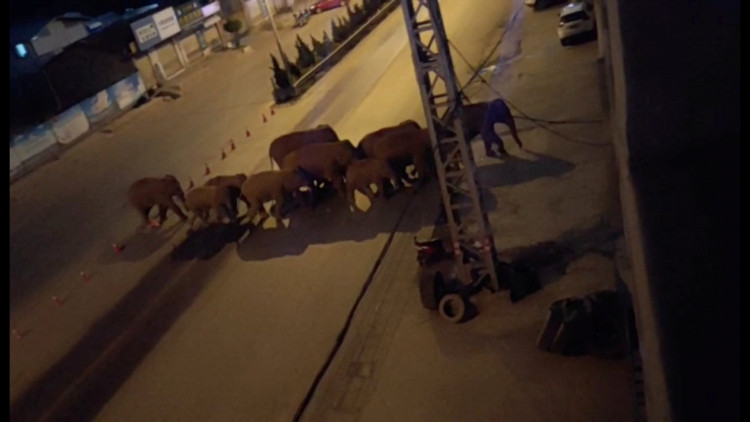Authorities said this week the wandering wild Asian elephant herd that has captivated the world's attention has decided to linger around Shijie Township in Yuxi, in southwest China's Yunnan Province.
A male elephant that strayed from the herd five days ago is currently 11.8 kilometers (7.3 miles) away in a forest in Anning, a county-level city under the jurisdiction of the provincial capital Kunming. According to the headquarters in charge of monitoring their migration, all of the elephants are safe and well, a Xinhua News Agency report said.
It has been months since a herd of 15, originally 17, elephants left their home in the Mengyangzi Nature Reserve in Xishuangbanna, southern Yunnan province, and trekked north in search of a new habitat, and it's been a week since they arrived on the outskirts of the provincial capital Kunming.
The herd has morphed into a media circus, but there has been little coverage or discussion of the causes for their migration, including the loss of nearly half of their habitat in the last two decades.
Zhang Sanfeng, a WeChat blogger, likened the plight of the elephants to the 1998 film "The Truman Show," asserting that people are ignoring the crisis and overlooking the reason why the herd left their home.
"We all know that they've lost their homeland forever, yet we still imagine their trip as romantic and mystical," the blogger wrote.
Professor Zhang Li, an elephant expert at Beijing Normal University, previously told the South China Morning Post that the elephants were on their way to find a better habitat.
According to his research, suitable habitat for Asian elephants in Yunnan has been reduced by 40% in the last 20 years due to land modification for economic crops such as tea and rubber.
Local governments, according to Li, must devise a way for long-term restoration of local natural habitat.
In China, Asian elephants are protected at the state level, with the majority of them found in Yunnan. The province's wild elephant population has increased to almost 300, up from 193 in the 1980s, thanks to increased preservation efforts.






